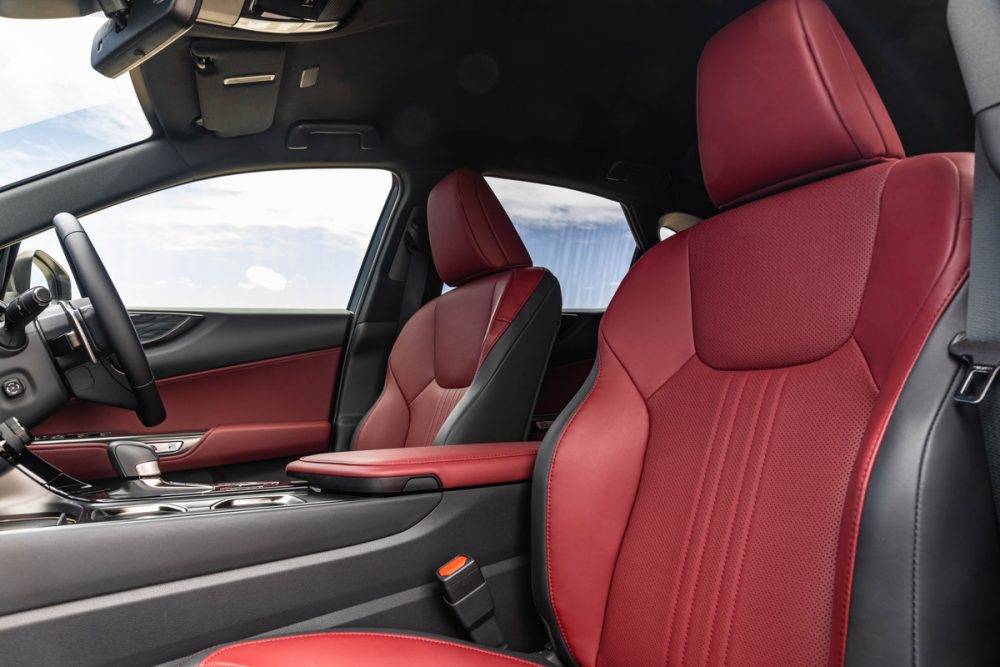Move over, Germans: The exterior of the new Lexus NX range has been made over, giving it a classier and sportier look.
Lexus SA might have been experiencing somewhat of a hiatus in the South African market in recent months, no thanks to supply constraints hamstringing sales numbers, but there seems to be some form of movement in a positive direction, as evidenced by its latest crop of models.
The launch of the NX models in the fairest Cape recently reacquainted us with the brand and its offerings.
This week, we focus on the NX. Launched in 2014 as the Japanese luxury marque’s mid-size SUV to take on the German triumvirate of the Audi Q5, BMW X3 and Mercedes-Benz GLC, it went on to become a runaway success for the marque in the European and Russian markets.
Playing in a very popular segment of the SUV market, the model was decent, if not entirely great, but the latest, second-generation model looks set to address that anomaly — and then some.
For starters, the new NX’s styling is more amiable, in my opinion, and gives it a universal appeal that should appease male and female buyers alike.
It still speaks that origami-styling language but with fewer creases than its predecessor, giving it a classier and, dare I say, sportier, look.
Dimensionally, the new model has been elongated by 20mm, the wheelbase is now 30mm longer, while the width and height have grown by 20mm and 5mm, respectively.
This increase in size translates to a roomier cabin for both front and rear occupants, while the boot, at 520 litres, is fairly sizable and, at worst, comparable to its rivals.
The now signature spindle grille has a more upright look, which is less prominent, and complements the smoother overall design.
Wheel sizes go up to 20 inches, depending on the specification.
The rear of the vehicle, with its LED light clusters and horizontal light strip bisecting them, is a modern touch, and so too is the Lexus lettering on the boot instead of just having the L symbol.
Overall, the NX has had its looks tidied up and cracks a nod from this heavily opinionated enclave.
Thankfully, this modern interpretation spills into the cabin, which is dominated by a 14-inch infotainment screen which offers easy legibility and functionality, boasting Android Auto and Apple CarPlay cellphone integration and shortcut rotary switches for the climate control.
There is also an inductive smartphone charger and both USB and USB C charging points.
If there is some ergonomic criticism I can level at the cabin architecture, it is the door-opening mechanism, which takes some fumbling to operate, but perhaps we just required a bit more time with the setup to become accustomed to it.
In terms of motivation, the NX250 is powered by a normally aspirated 2.5-litre engine with 152kW and 243Nm through a CVT gearbox.
Next in line is the NX350, powered by a 2.4-litre turbo making 205kW and 430Nm, allowing a claimed sprint time of from 0 to 100km/h in seven seconds, while fuel consumption is pegged at 8.1 litres/100km.
The hybrid models — hence the “h” suffix — which will be the dominant offerings in the range, will be badged NX350h and use a 2.5-litre normally aspirated engine. This is augmented by a lithium-ion battery pack for a total system output of 179kW, to give a 0 to 100km/h sprint time of 7.7 seconds, and a fuel economy figure of 5 litres/100km.
 In style: The Lexus NX boasts a 14-inch infotainment screen which offers easy legibility and functionality.
In style: The Lexus NX boasts a 14-inch infotainment screen which offers easy legibility and functionality.
All the models come standard with all-wheel drive, while specification is available in EX, SE and F Sport, depending on the engine derivative.
At the launch, we spent time in the feisty NX350 F Sport, which offered a surprisingly sprightly performance and exemplary handling.
Dialling it into Sport+ mode gives a layer of dynamism that I have never experienced in a mid-size Lexus SUV before, feeling sure-footed through the series of road kinks we threaded on our route.
Thanks largely to the new platform that offers 20mm lower ground clearance than the outgoing model, keen drivers will remain entertained.
Another feather in its cap is the level of cabin refinement, thanks to the low, almost negligible, wind and road noise intrusion.
This is easily the closest the NX has got to giving its German rivals a proper run for their money. This speaks volumes for a brand that has been trying valiantly to compete with the Teutonic luxury trio since its inception in 1989.
Indeed, with its comprehensive standard equipment list, the NX offers palpable value compared to its main rivals, which in this rather challenging economic climate, makes for a compelling proposition.
 Plush: The interior of the Lexus NX.
Plush: The interior of the Lexus NX.
Price:
• NX250 EX: R968 000
• NX350h EX: R1 000 100
• NX350h SE: R1 172 900
• NX350h F Sport: R1 200 800
• NX350 F Sport: R1 211 900